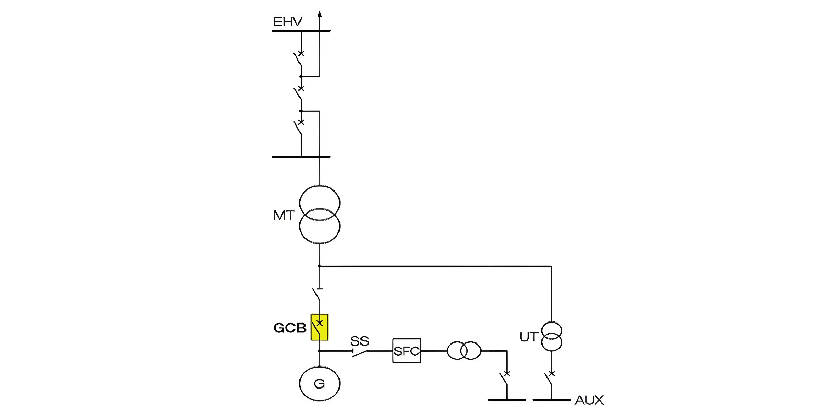
When starting a gas - turbine generator, its rotor must first be accelerated by external means to approximately 60% of the rated speed. Only then does the start - up process become self - sustaining, meaning the turbine can generate enough power to continue the process independently. To achieve this initial acceleration, energy can be supplied by various means, with a static frequency converter (SFC) being a common choice.
Generator circuit breakers (GCBs) play a crucial role in this process. They are designed to incorporate the switching functions necessary for SFC - based starting within their enclosures. The output of the SFC, which features a voltage of variable amplitude and frequency, is routed to the generator terminals through a dedicated starting switch. This starting switch is engineered to handle the specific voltage, current, and current duration characteristics that occur during the SFC start - up phase of the gas turbine. Its rated voltage is typically selected based on the rated voltage of the SFC, which is generally much lower than the generator's rated voltage.
The typical layout of a gas turbine power plant is illustrated in the figure below.
- MT: Main transformer
- UT: Unit transformer
- SS: Starting switch
- SFC: Static frequency converter
- AUX: Unit auxiliaries

